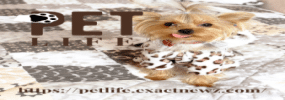How To Stop Your Dog From Chewing
Chewing is an annoying but natural part of a puppy’s development. It is very similar to teething in babies and the chewing stages are necessary to help with teething issues. Expecting a puppy to not chew is not reasonable, but they can be taught to chew the right thing, rather than your shoes and furniture.
Adult dogs that chew often are bored or are suffering from a separation anxiety disorder. Usually, the adult dogs that chew can be taught to curb their behavior or chew appropriately relatively easily. Some will require professional assistance from a trainer or dog behavior specialist.
Stages of growth
Puppies chew when they are teething. This usually occurs sometime before the six-month stage, depending on the specific breed of dog. Some of the larger breeds may continue chewing past the six-month stage and some breeds are just known for chewing behaviors. Regardless of the breed up to six months will be problematic for most puppies. There are several steps that owners can take to minimize the damage that may occur with chewing behaviors:
· Puppy-proof your home. This means removing all hanging wires, electrical cords, curtain pulls, and other dangling objects. Hanging plants that touch the ground can also be tempting to chew on and can also be poisonous.
· Keep chewable items in drawers or out of the puppy’s reach. For example, toys, shoes, remote controls, books, backpacks and briefcases, telephones, and even laptop computers need to be put away or kept on tables or desks well out of the puppy’s reach.
· Provide a wide variety of chew toys while you are gone. This means different shapes and sizes. Thick pieces of cotton rope with knots in the ends are great for chewing on. Heavy rubber balls or Nylabone chew toys are safe and virtually indestructible.
· Freezing dog teething rings and leaving them in the crate or doggy area of the house provide relief to the gums and entertainment as well.
If you notice the puppy chewing something that is not correct don’t punish them. Simply say “No” and substitute what you want them to chew on. Praise them when they are chewing on the right things. Make sure you say something like “Good boy/girl for chewing on your ball (rope, toy, stick)”. This helps the puppy learn the word for what he is chewing on. Later you will be able to say, “Get the ball/stick/rope” and the puppy will know what you mean.
Toys to avoid
Some toys, even those sold in pet stores, should never be used with a puppy. Toys that are flimsy or have many parts that can be chewed off pose choking hazards. Toys that have long strings or ropes that could become wrapped around the puppy’s neck are potentially deadly toys.
Stuffed animals are appropriate for some older puppies and dogs but for younger puppies that are chewing constantly the stuffed toy will quickly be shredded. This leaves parts of cloth and the stuffing material that can be swallowed leading to gastrointestinal blockages and possible choking issues.
Natural bones, even raw bones, are not generally advised for puppies. They are usually too hard for the puppy teeth and lead to splintering and breakage of the existing teeth. In addition, the puppies will be more likely to try to swallow any splinters and this can result in the bone splinters becoming lodged in the gums or the throat. If you do wish to allow your puppy to chew on bones be sure they are raw beef bones that are from a joint.
Never allow your dog to eat pork bones and also never allow raw or cooked poultry bones of any kind. Supervise the puppy while he is chewing the bone and remove it at any sign of splintering or when the bone becomes small enough that the puppy might try to swallow it.
The chewing phase in puppies, like the teething phase in children, will pass. By taking a few precautions with your household items, supplying lots of alternative chewing toys, and teaching your puppy what to chew on the stage will pass without any problems now or in the future.




